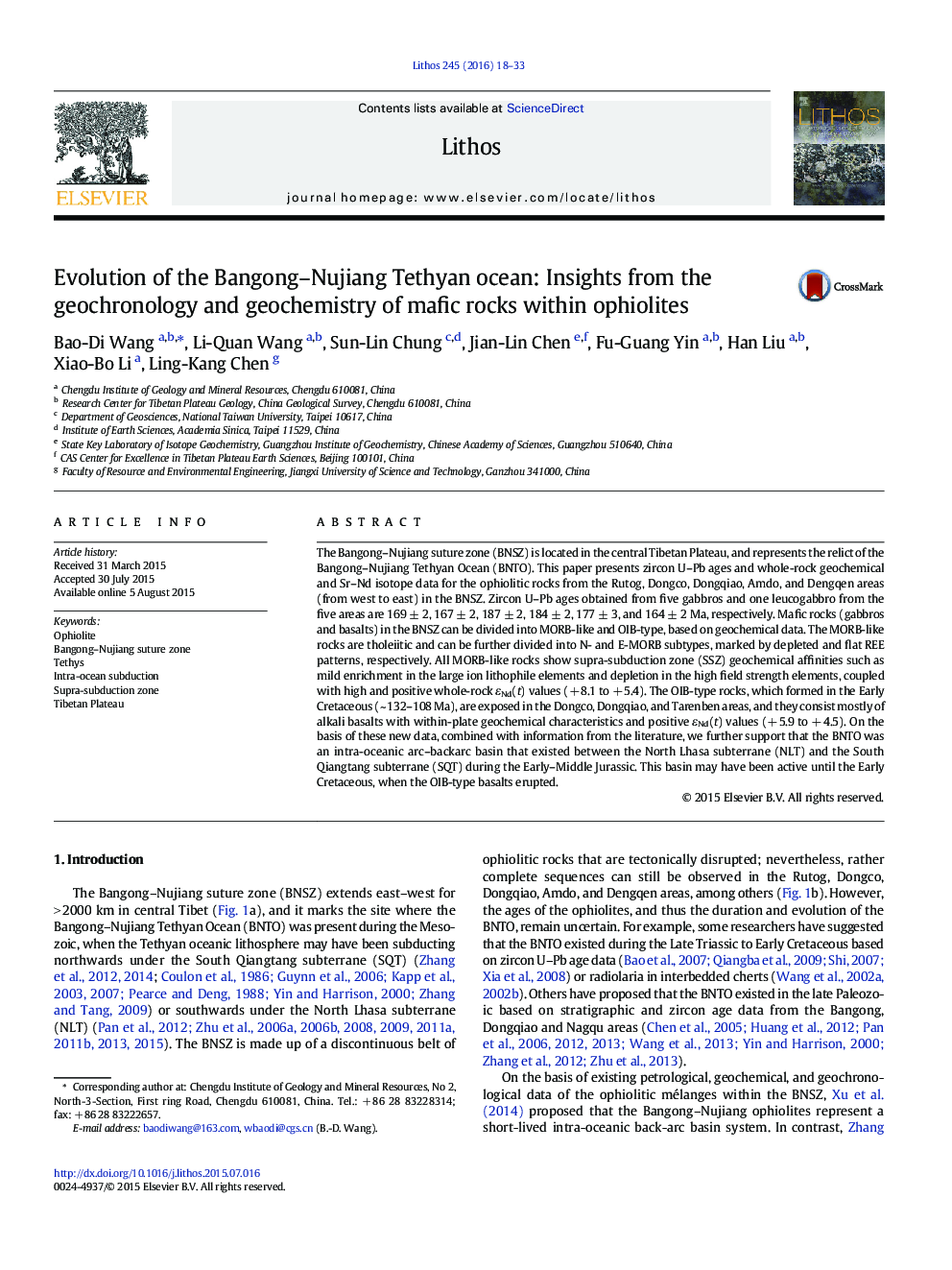| کد مقاله | کد نشریه | سال انتشار | مقاله انگلیسی | نسخه تمام متن |
|---|---|---|---|---|
| 4715523 | 1638651 | 2016 | 16 صفحه PDF | دانلود رایگان |
• The new zircon U–Pb age, geochemical and Sr–Nd isotopic study of the Bangong–Nujiang ophiolites
• Bangong–Nujiang MORB-like ophiolites were a short magmatic duration in the Early–Middle Jurassic.
• Bangong–Nujiang Tethyan ocean was an intra-oceanic arc–backarc basin.
• Presenting a synthetic model for the tectonic evolution of the Bangong–Nujiang Tethyan ocean
The Bangong–Nujiang suture zone (BNSZ) is located in the central Tibetan Plateau, and represents the relict of the Bangong–Nujiang Tethyan Ocean (BNTO). This paper presents zircon U–Pb ages and whole-rock geochemical and Sr–Nd isotope data for the ophiolitic rocks from the Rutog, Dongco, Dongqiao, Amdo, and Dengqen areas (from west to east) in the BNSZ. Zircon U–Pb ages obtained from five gabbros and one leucogabbro from the five areas are 169 ± 2, 167 ± 2, 187 ± 2, 184 ± 2, 177 ± 3, and 164 ± 2 Ma, respectively. Mafic rocks (gabbros and basalts) in the BNSZ can be divided into MORB-like and OIB-type, based on geochemical data. The MORB-like rocks are tholeiitic and can be further divided into N- and E-MORB subtypes, marked by depleted and flat REE patterns, respectively. All MORB-like rocks show supra-subduction zone (SSZ) geochemical affinities such as mild enrichment in the large ion lithophile elements and depletion in the high field strength elements, coupled with high and positive whole-rock εNd(t) values (+ 8.1 to + 5.4). The OIB-type rocks, which formed in the Early Cretaceous (~ 132–108 Ma), are exposed in the Dongco, Dongqiao, and Tarenben areas, and they consist mostly of alkali basalts with within-plate geochemical characteristics and positive εNd(t) values (+ 5.9 to + 4.5). On the basis of these new data, combined with information from the literature, we further support that the BNTO was an intra-oceanic arc–backarc basin that existed between the North Lhasa subterrane (NLT) and the South Qiangtang subterrane (SQT) during the Early–Middle Jurassic. This basin may have been active until the Early Cretaceous, when the OIB-type basalts erupted.
Figure optionsDownload as PowerPoint slide
Journal: Lithos - Volume 245, 15 February 2016, Pages 18–33
